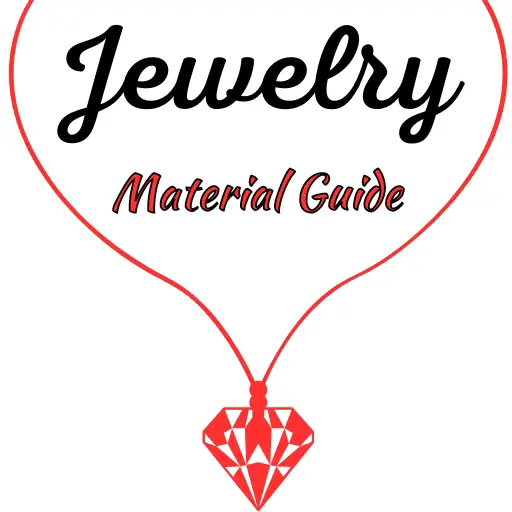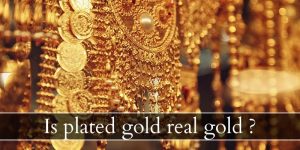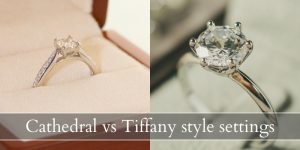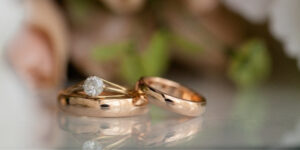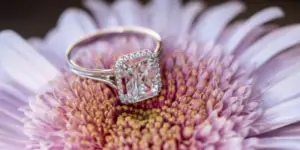Heirloom jewelry is not well known but you might just have a few pieces at home right now ! Today we’re taking a look at what these jewelry pieces are, what they usually look like, and how they can be reused.
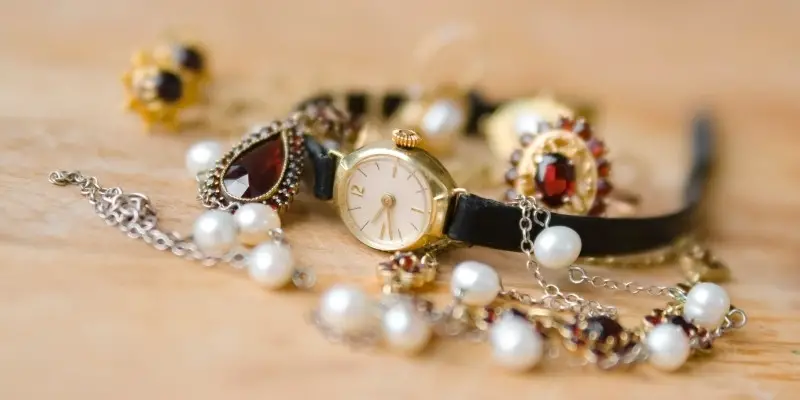
What is heirloom jewelry ?
Heirloom jewelry is a piece that has been passed down at least one generation, such as from mother to daughter, father to son, uncle to nephew or niece, and so on. The heirloom status means someone has worn it for quite some time, and it has been passed down to a new generation. Most of the time it’s the sentimental value that is greater than the monetary value of an heirloom piece.
You might be wearing heirloom jewelry without knowing it ! Perhaps that necklace you have from your mother was given to her by her grandmother ? Maybe your dad’s bracelet used to belong to your grandfather, and now it’s yours.
Is heirloom jewelry vintage ?
Heirloom jewelry is often vintage because most of the time the previous owner had it for several decades before passing it on. Jewelry becomes vintage once it hits the 50 year mark. Past 100 it is considered antique. This means that in 2022 a bracelet from 1992 is only 30 years old and cannot be considered vintage, but it may be an heirloom if it was worn by a family member and then passed onto you.
So not all heirloom jewelry is vintage, and not all vintage jewelry is heirloom because sometimes they aren’t passed down to a family member in particular, they are just sold.
Is heirloom jewelry worth anything ?
If you want to sell it heirloom jewelry is only worth its materials, such as the metal and any gemstones it may have. Heirloom jewelry worth is calculated like any other jewelry, taking into account the amount of precious metal and the gemstones used and previous ownership is usually not relevant.
So if you’re looking to sell a family heirloom you should know that most of the time you will only be offered as much money as the materials are worth. Unless you’re from a well known or influential family and are selling something that belonged to a very famous family member.
Read also: What Gemstones Are Red ?
Depending on the age of the jewelry you might be able to get a good price because some materials were more common then and are now very rare. For example pure zircon (not cubic zirconia !) was more common in jewelry before WW2 in large carats (above 15) and in blue, but now is pretty scarce, especially over 5 carats. If your jewelry has such a gem, then it might fetch a high price.
Another example is natural alexandrite. This gemstone is green by daylight, red by candle light, and was much more common during the Victorian era than it is now. Nowadays alexandrite on the market is synthetic, and shows a different color ranging from teal to raspberry, and doesn’t go through green and yellow.
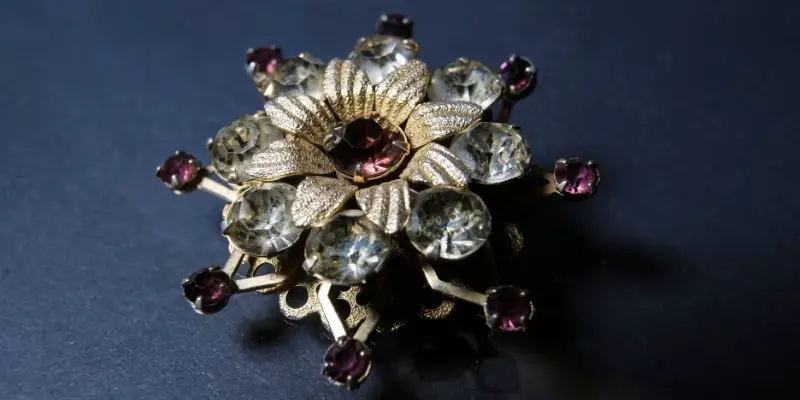
Please note that mid-century jewelry features many, many rhinestones which are not true gemstones but are now considered of higher quality than most of the costume jewelry on the market today. If you do have one such piece, like a brooch for example, you should get it appraised.
How do you store heirloom jewelry ?
Heirloom jewelry can be very old, depending on tis age. As such, some if the materials may already be scratched or damaged so you should definitely take extra care when storing it. Here’s a quick rundown on how to store heirloom jewelry.
Soft textile sachets for each jewelry piece, especially if it’s a very old piece
Each piece of jewelry is special in its own way, and needs protection. So make sure you get a small felt satchel for each piece and store them in their individual pouches. if this option is not available, there are jewelry boxes with individual compartments and they are usually lined with a soft material.
Or, if none of these are available, find a piece of cloth or textile that is reasonably soft and that you won’t miss. cut it to size and wrap each jewelry piece in this cloth.
If you were to store all the jewelry together it might scratch in time, depending onw how you handle it. Best to keep it safe, especially if you want to pass it down or sell it.
Be very careful when cleaning it, or bring it to a professional
Old jewelry will very likely get a bit dirty and even develop a patina. This is normal and it can easily be foxed with a quick but gentle cleaning. If doing this at home all you need is warm, soapy water, the softest toothbrush you have, and some cotton buds. gently scrub the jewelry with the toothbrush and soapy water or use the cotton buds dipped in soapy water to rub the jewelry clean.
If you’re nervous about scratching it, it might be better to take it to a jeweler for a professional clean. If needed they can even polish the jewelry and check that the gemstones aren’t loose.
Can you repurpose heirloom jewelry ?
Yes, you can repurpose heirloom jewelry and how you do it depends on many things. How attached you are to its current design, how comfortable you are with reusing the materials to make a different piece, and how willing you are to improvise by rethinking how you wear the jewelry. Of course, not all jewelry is the same and what might work for a bracelet might not work for a pair of earrings. Let’s take a look at what you can do.
Try wearing heirloom jewelry differently
The first option is to leave the jewelry as it is and think of ways you can wear it. For example a necklace can become a bracelet, simply by looping it around your wrist 2-3 times and checking that it doesn’t fall off. A pair of earrings can become a pendant and a brooch, depending on the kind of earrings you’re looking at.
A bracelet worn by someone with a wide wrist could become a necklace for you, if your neck is skinny enough. A dainty brooch could become a pendant, or an accent piece on a belt only used for fancy occasions.
Update the piece to a more modern look
If you want to wear the heirloom jewelry more often (or daily) but it doesn’t seem to work very well in its current form with that you’ve got, then perhaps a little tweaking is necessary, and you will likely need a jeweler. For example getting a three-stone diamond ring that was originally yellow gold set in platinum or white gold would update the look entirely.
Another idea would be to set a solitaire gemstone in a very small halo. For example if it’s a pendant with a rose cut sapphire it could be set in a halo, or a bezel setting and then a halo.
Reinvent the jewelry entirely
If you’re fine with reinventing the jewelry entirely then you could take it all apart, and work a whole new design. For example a large gold and ruby brooch could become a pair of earrings, a necklace, or a ring and wedding band depending on how much material there is. or split the gemstones between you and your siblings, if it’s appropriate and there are enough gems.
Or perhaps use the gems for one thing and the metal for another jewelry. The options are endless here and you’re bound to make something good out of it. The greatest transformation we’ve seen is a diamond and yellow gold cross pendant and necklace that have been transformed into an engagement ring.
There is one last thing you can do with heirloom jewelry though…
Are heirloom rings okay to propose with ?
You can propose with an heirloom ring, yes, as long as the recipient is okay with receiving this type of jewelry. Resizing is generally easy if there aren’t too many gemstones. Keep in mind that heirloom jewelry is highly personal and there is a lot of emotional value attached to it. Perhaps you love your grandmother’s engagement ring but your fiancee to be doesn’t like the style.
Heirloom jewelry really is a debatable topic, which is why you should have a talk about this beforehand. Bring up the topic with your partner, and try and gauge what sort of engagement ring she’d prefer. You might be totally surprised !
What makes a diamond heirloom ?
A diamond becomes a heirloom when it’s been worn by a family member, such as a diamond passed down for several generations, or even just one. This is a more flexible idea than proposing with the heirloom ring: remove the diamond(s) from the ring and incorporate them into a ring design you and your fiancee would love. This way the diamond gets passed down another generation and when the time comes to pass it along, it can be repurposed for another ring or piece of jewelry.

I’m the main author for jewelrymaterialguide.com. I started this site after we did tons of research before our wedding and noticed that there is information about rings, jewelry, and so on that is really hard to find on the internet.
